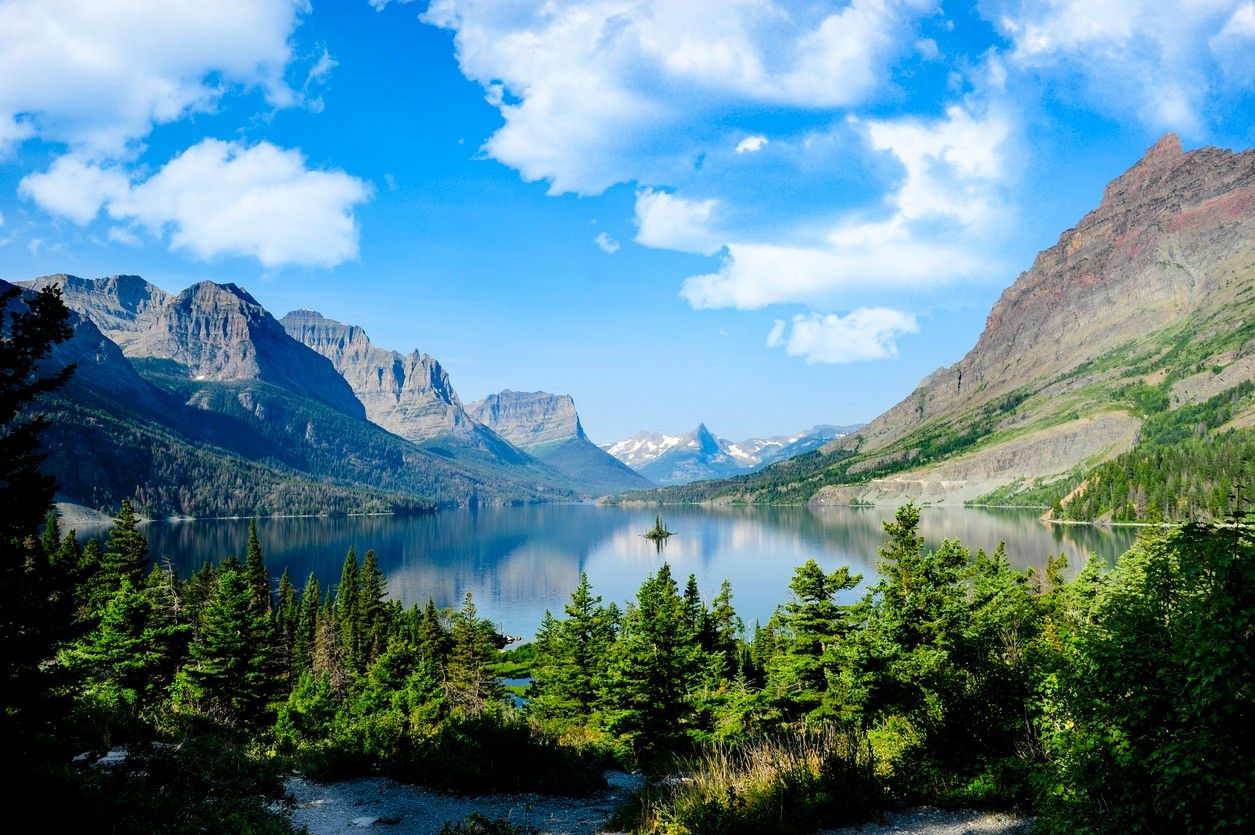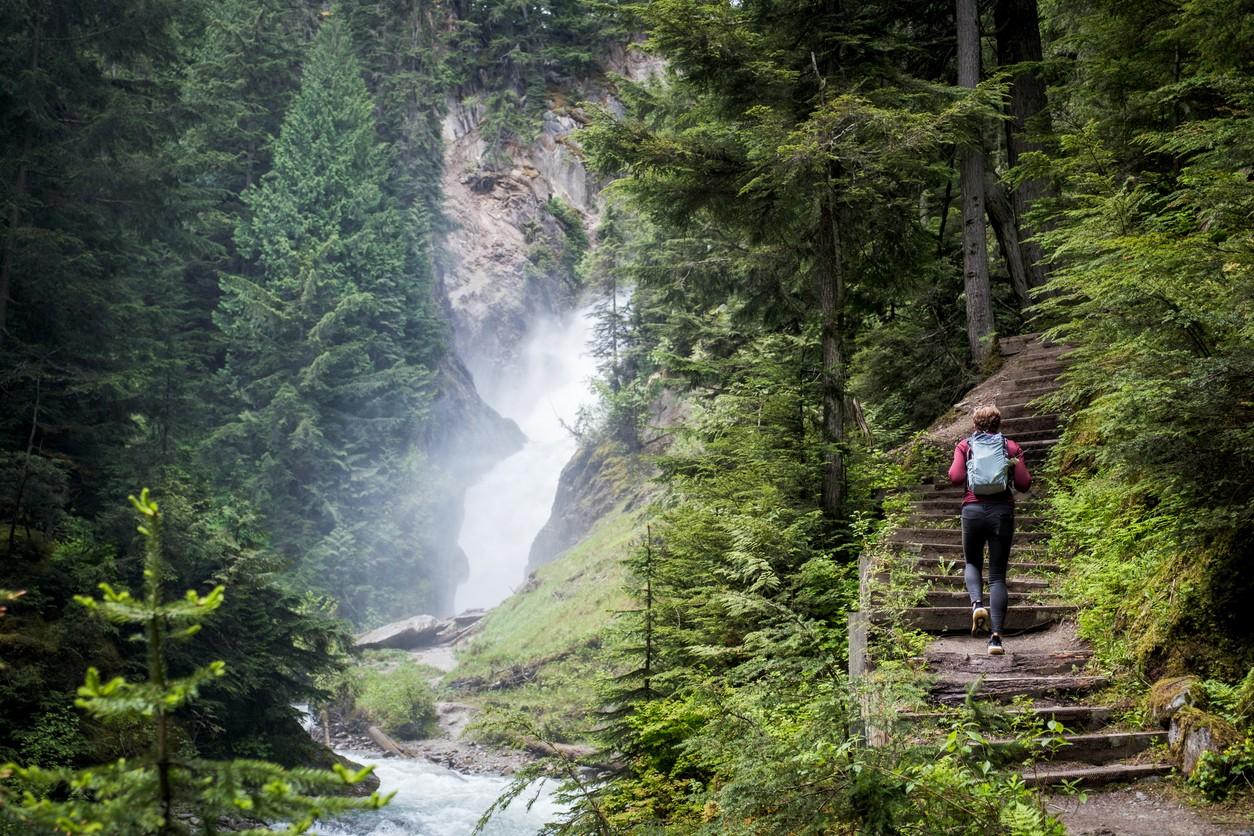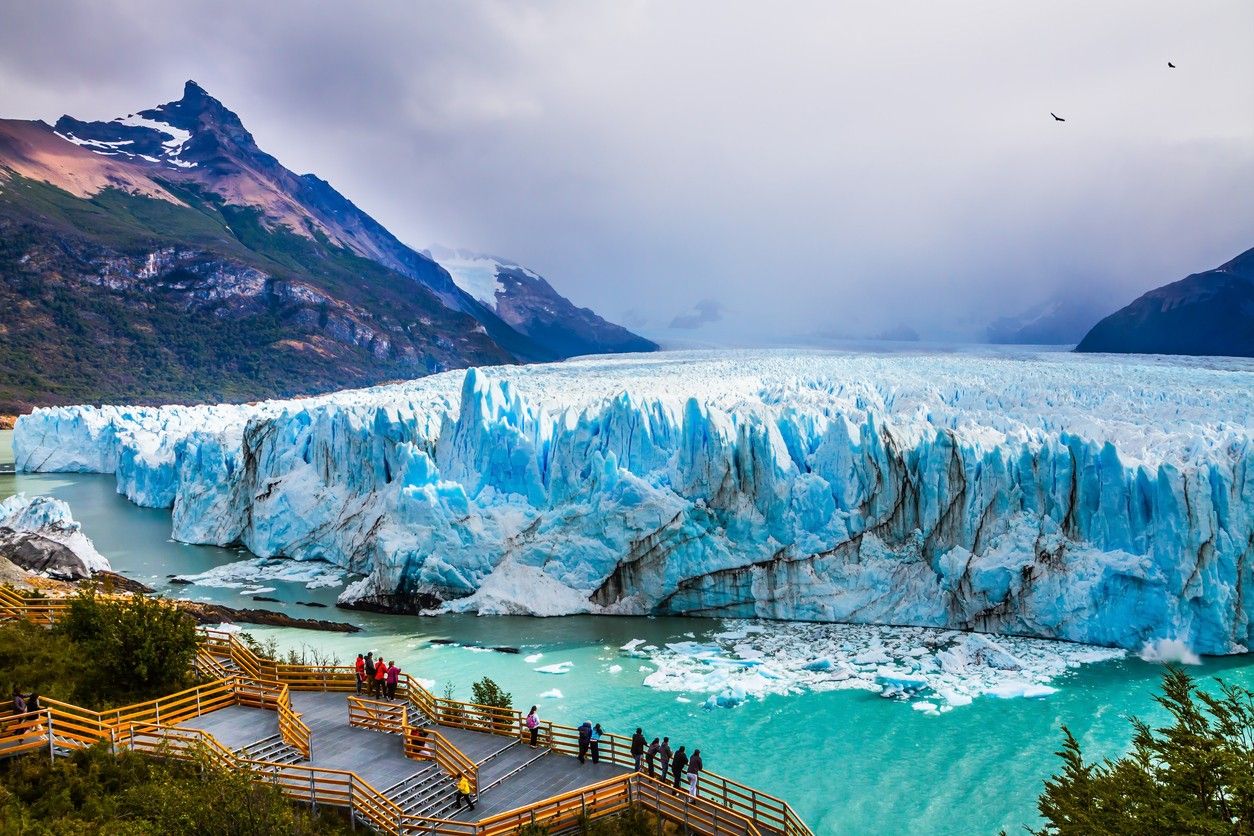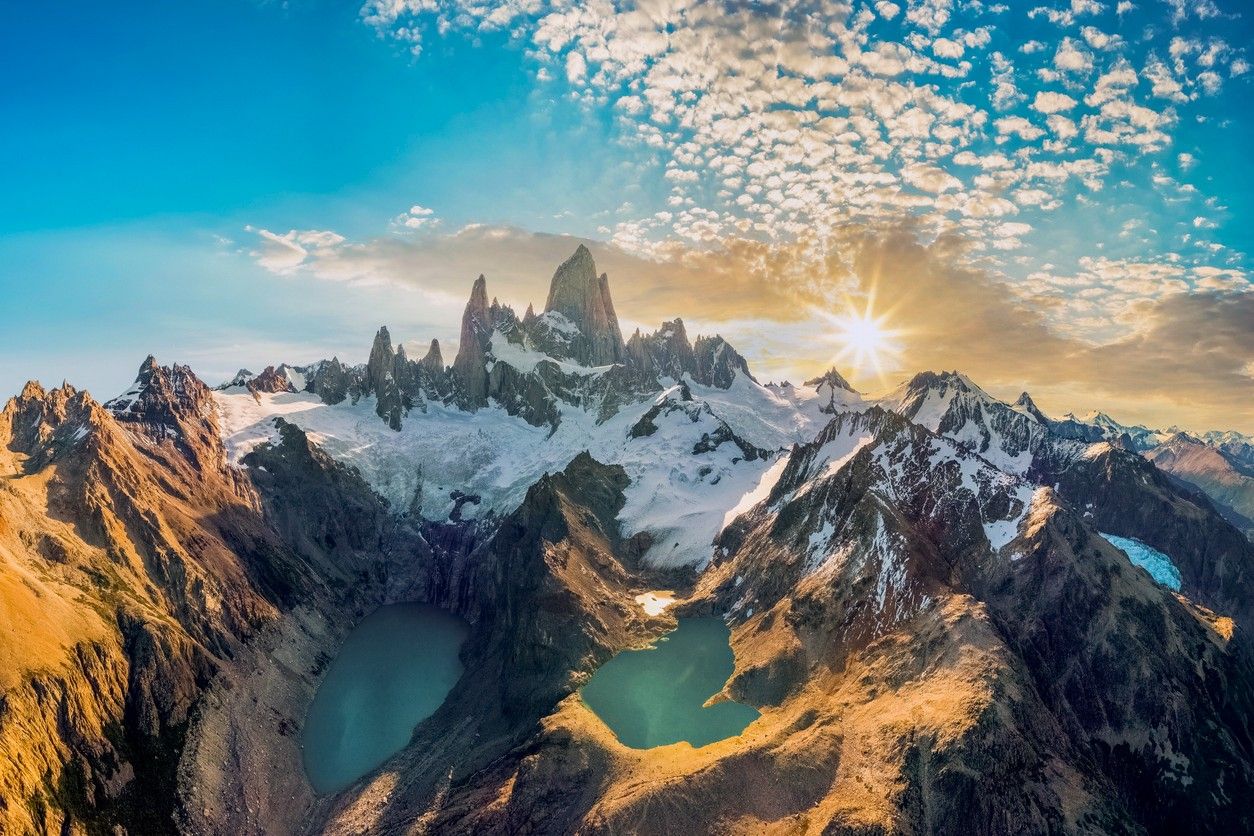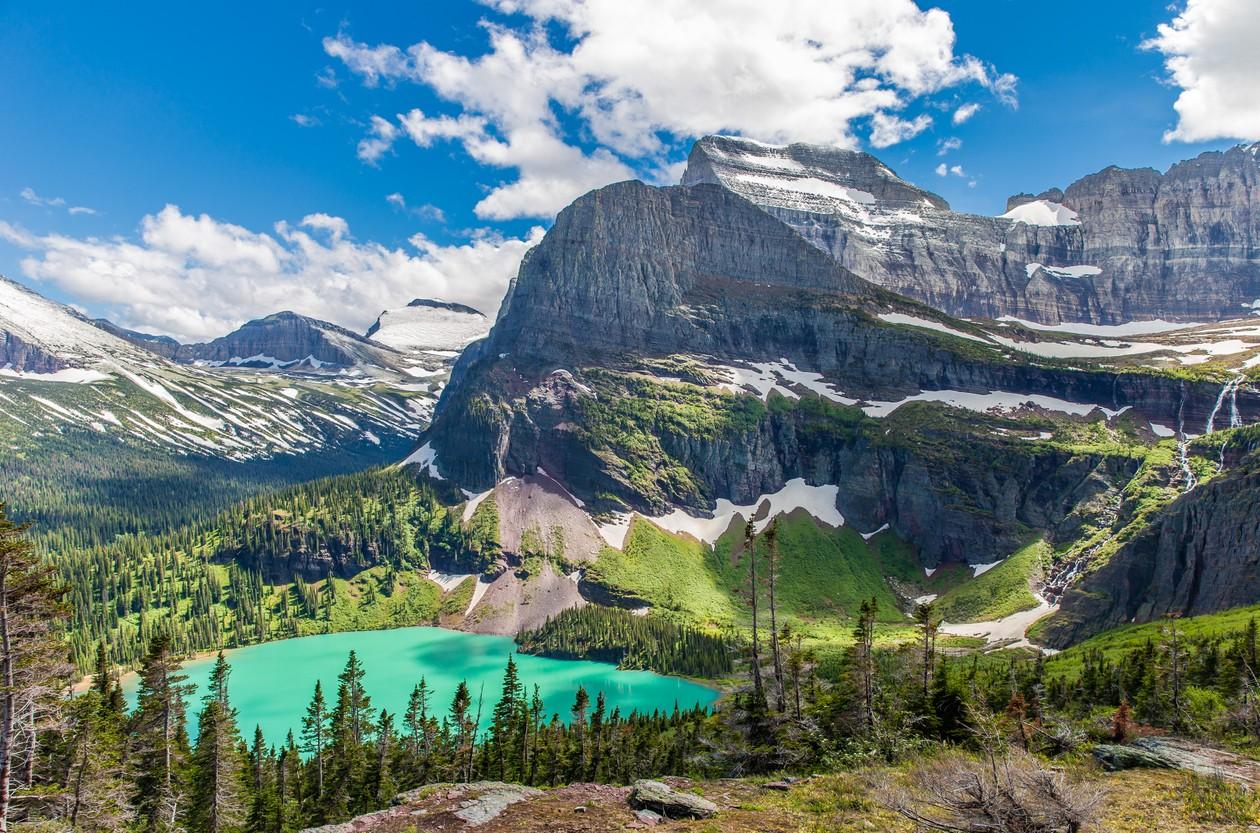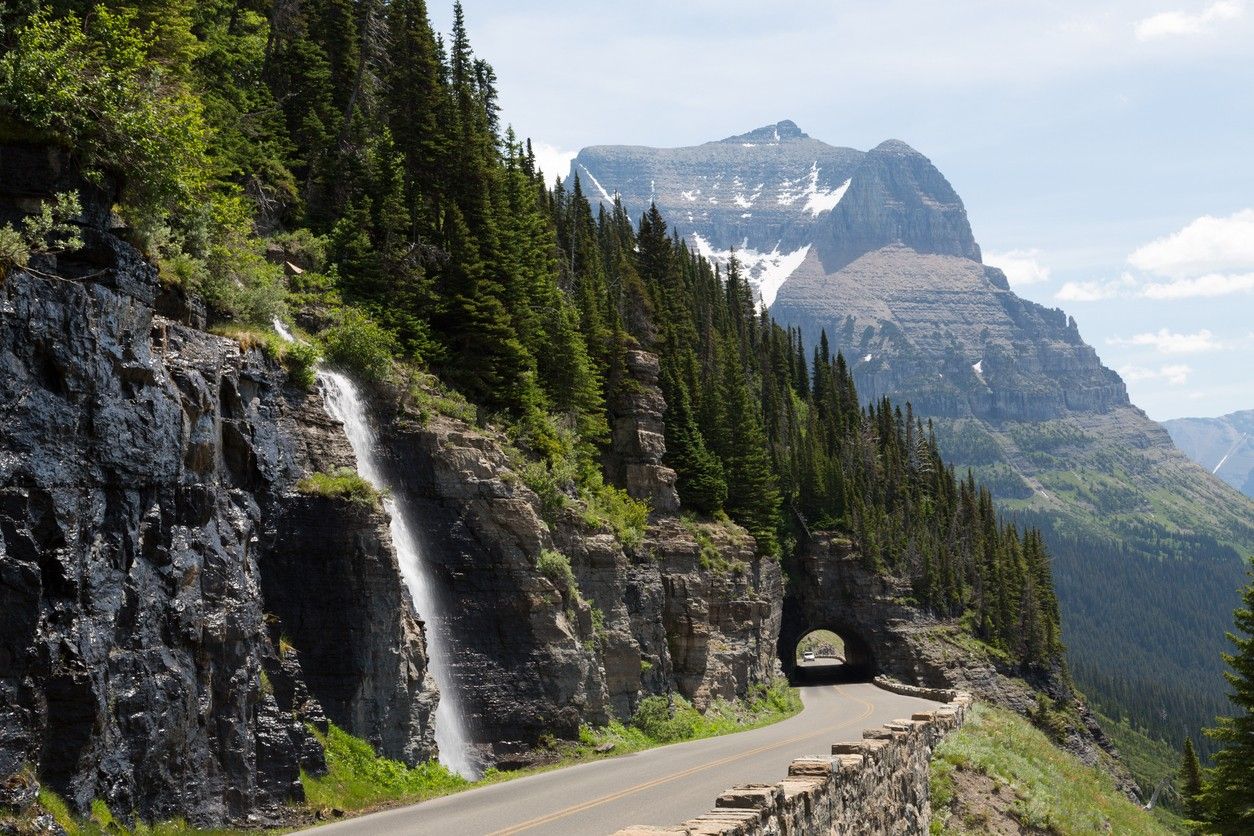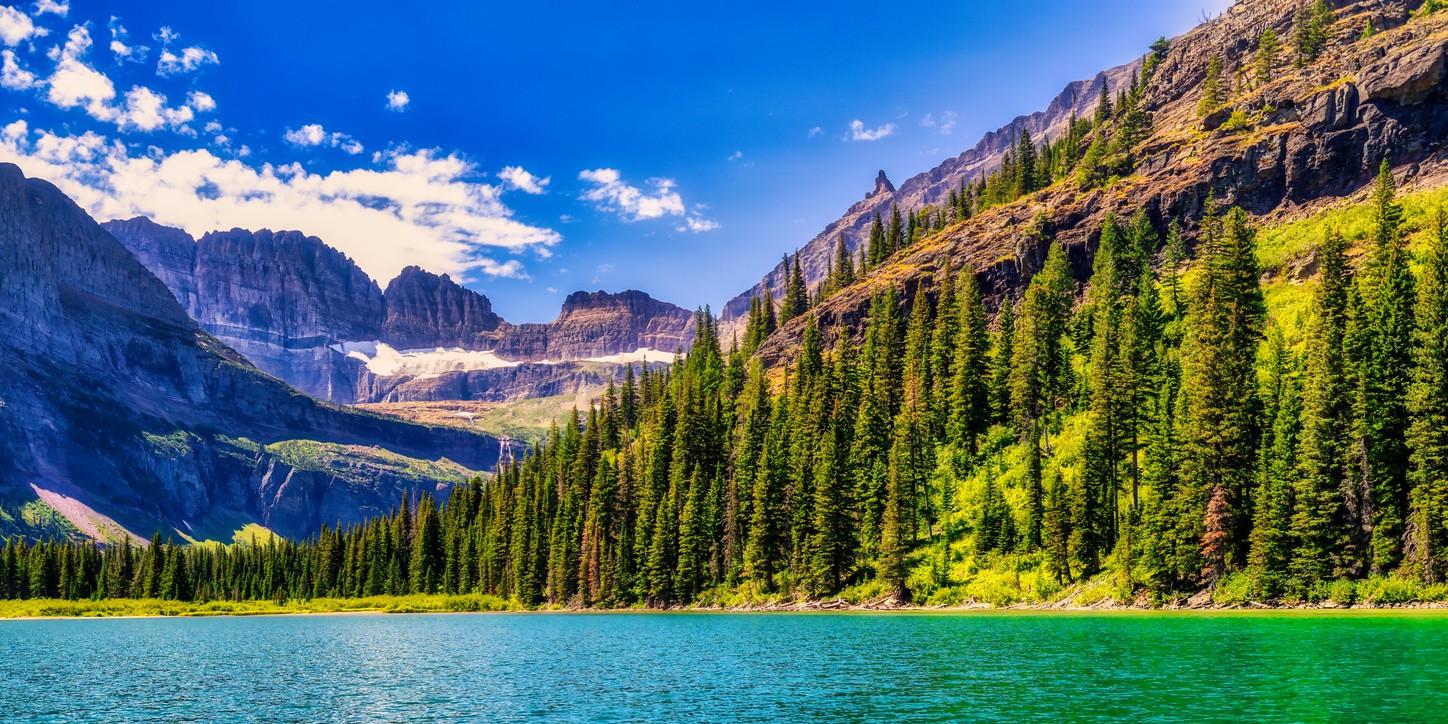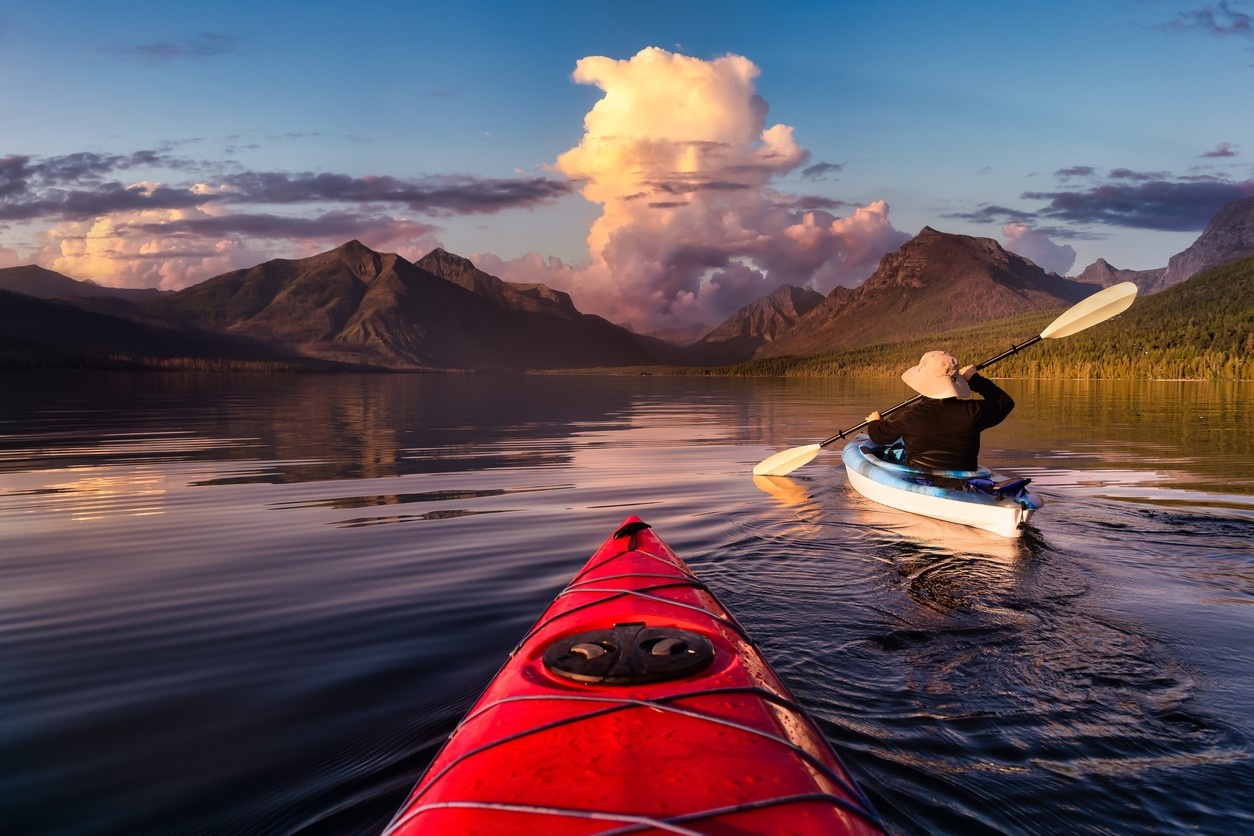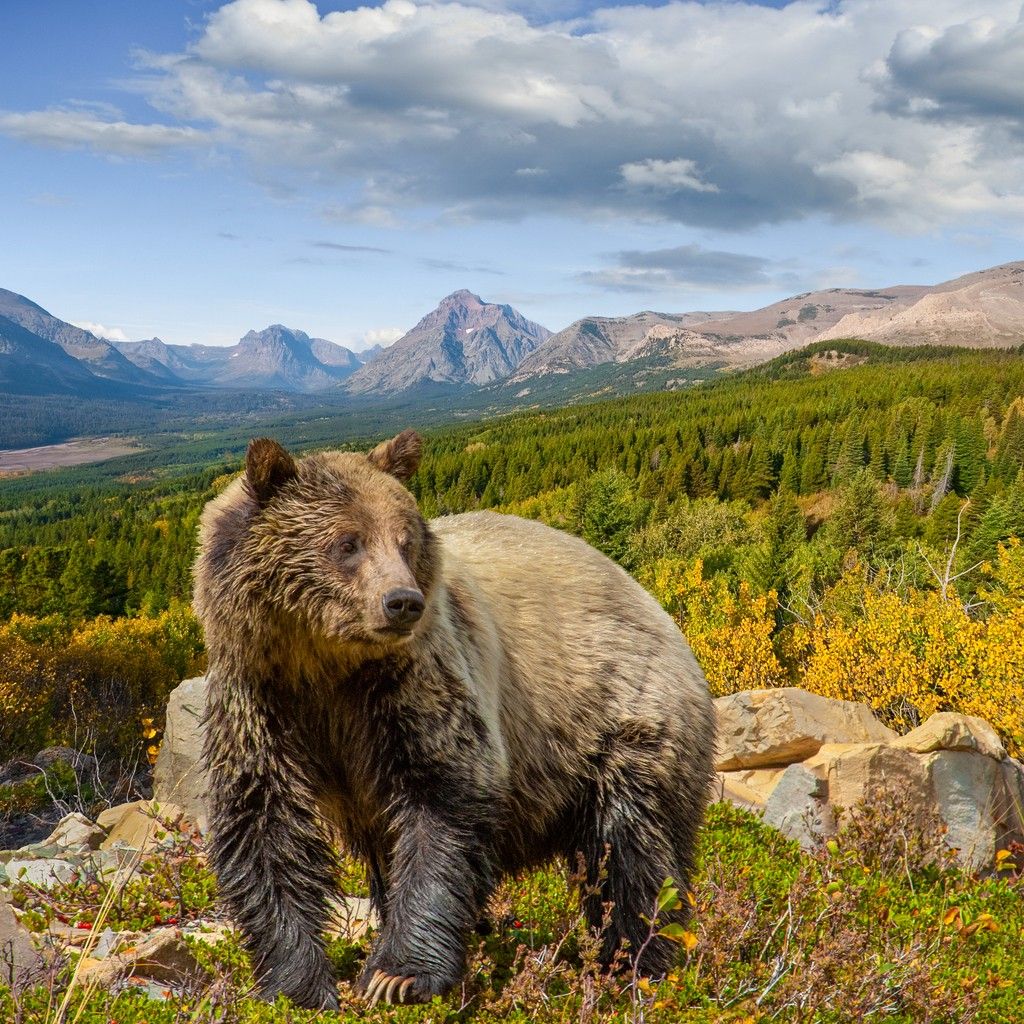Set amongst the Rocky Mountains in the US state of Montana, Glacier National Park is a true marvel of nature. Encompassing over one million acres, this wilderness sanctuary harbours ancient forests, rugged mountains, pristine lakes, and hundreds of glaciers. Known as the "Crown of the Continent", Glacier is a realm where the forces of erosion have sculpted breathtaking landscapes, carving dramatic U-shaped valleys and imposing arêtes. Ever since the park's establishment in 1910, Glacier has enthralled visitors with its grandeur and abundance of natural treasures. The vistas here are simply awe-inspiring, be it the sawtooth ridges of the Lewis Range, the shimmering expanse of Lake McDonald, or the kaleidoscope of wildflowers that paints the meadows in summer. This primordial land is also a haven for wildlife, with grizzly bears, mountain goats, and bighorn sheep roaming the wilds. Yet, beyond its physical splendour, Glacier holds a deeper allure – one that speaks to the adventurer within us all.
Exploring the Crown Jewel of the Rockies
With over 700 miles of trails winding through Glacier's dramatic landscapes, hiking is an absolute must for any visitor. Whether you're an experienced trekker or a casual day hiker, the park's network of pathways offers something for every skill level and interest.
Iconic Day Hikes
For those seeking an introduction to Glacier's wonders without overexerting themselves, the park's day hikes provide the perfect opportunity to immerse yourself in the natural splendour. Here are some of the most iconic day hike options:
Avalanche Lake Trail (5.9 miles round-trip) - A moderate hike leading to a stunning glacial lake surrounded by towering peaks and ancient cedars.
Trail of the Cedars (0.9 mile loop) - An easy, family-friendly stroll through an ancient cedar forest, with interpretive signs about the park's ecology.
Highline Trail (11.6 miles one-way) - A strenuous trek along the Continental Divide, offering breathtaking vistas of arêtes, glaciers, and wildflower meadows.
Hidden Lake Overlook (2.8 miles round-trip) - A short but steep climb rewarded with panoramic views of the iconic beargrass-covered slopes and Hidden Lake below.
Iceberg Lake Trail (9.6 miles round-trip) - A moderately challenging hike leading to a stunning glacial lake often dotted with icebergs calved from the surrounding cliffs.
St. Mary & Virginia Falls (3 miles round-trip) - An easy jaunt to not one but two impressive waterfalls cascading through lush forest.
Epic Multi-Day Treks
For adventurers seeking a true wilderness immersion, Glacier offers a plethora of multi-day backpacking expeditions:
Gunsight Pass Trail (20 miles one-way) - A challenging trek reaching 6,946 feet and offering stunning views of glaciers, cirques, and jagged peaks.
Northern Circle (52.7-mile loop) - A strenuous circuit deep into the park's heart, traversing pristine meadows, forests, and mountain passes.
Fifty Mountain Backpack (68 miles one-way) - An epic journey along the Continental Divide, summiting multiple peaks over 50 miles of rugged terrain.
Nyack & Coal Creek Circuit (28-mile loop) - A moderately difficult loop showcasing diverse scenery from old-growth forests to alpine meadows.
Granite Park Chalet Route (16 miles one-way) - A classic trek to one of the park's famous backcountry chalets, with access to side trips like The Loop.
Ptarmigan Tunnel Hike (10.6 miles one-way) - A unique route passing through a hand-dug tunnel from the 1930s, amid stunning alpine vistas.
Scenic Drives and Overlooks
For those who prefer to experience Glacier's grandeur from the comfort of their vehicle, the famed Going-to-the-Sun Road is an absolute must-do. This engineering marvel winds for 50 miles through the heart of the park, affording breathtaking vistas around every bend.
Stop at Logan Pass, the road's highest point at 6,646 feet, and marvel at the arête of Reynolds Mountain, a sheer, jagged ridge that seems to defy gravity. From here, embark on short but rewarding hikes to hidden gems like the Hidden Lake Overlook, where you'll be treated to panoramic views of the iconic beargrass-covered slopes and the shimmering Hidden Lake below. The Highline Trail, one of the park's most famous hikes, also begins at Logan Pass, offering the opportunity to experience the trail's breathtaking vistas on foot.
Other notable overlooks along the Going-to-the-Sun Road include the Weeping Wall, where cascading waterfalls seem to defy the laws of physics, and Wild Goose Island Overlook, which offers stunning views of the narrow strip of land surrounded by the crystal-clear waters of St. Mary Lake. With each turn, the road reveals new wonders, reminding visitors why this engineering feat is considered one of the most scenic drives in the world.
Kayaking and Canoeing on Lake McDonald
Lake McDonald shines like a true gem, its glacial waters mirroring the towering peaks that encircle it with pristine reflection. For those craving a tranquil adventure, gliding across this serene lake's surface by kayak or canoe is an absolute must. Visitors can procure a kayak or canoe from the park's knowledgeable concessionaires before setting out on a self-guided aquatic tour. Paddlers will trace the lake's shoreline, discovering hidden coves and inlets that reveal new vistas of Glacier's grandeur with every stroke. As they navigate these glassy waters, sharp eyes may be rewarded with glimpses of the area's resident wildlife – perhaps a majestic bald eagle soaring overhead or a playful river otter frolicking amidst the shallows. Those seeking a more structured experience can partake in the guided kayak tours on offer, where knowledgeable guides impart insights into the park's unique geology, diverse ecology, and rich cultural heritage.
As the sun begins its descent, Lake McDonald takes on a breathtaking transformation. The alpenglow paints the surrounding peaks in hues of pink and orange, creating a kaleidoscope of colour reflected flawlessly on the lake's mirror-like surface. Whether exploring its hidden recesses or simply admiring the scenery, Lake McDonald offers an unparalleled opportunity to immerse oneself in Glacier's serene aquatic splendour.
Whitewater Rafting the Flathead River
The Middle Fork of the Flathead River beckons with an exhilarating whitewater adventure unmatched in its excitement. This raging torrent slices through the heart of Glacier National Park, renowned for its powerful rapids, dramatic scenery, and stunning array of wildlife. Adventurers can join a guided rafting tour and brace themselves for an unforgettable journey navigating the park's rugged wilderness by water. The rapids range from Class II to Class IV, providing an electrifying ride suitable for both novice and seasoned rafters alike. Rafters will be treated to a mesmerising display of nature's power as they careen through the churning whitewater, flanked by towering cliffs and cascading waterfalls that line the river's course. With eyes peeled, one may catch glimpses of the park's iconic residents, such as the majestic grizzly bears foraging along the banks or the graceful osprey soaring overhead, hunting for its next meal.
For fishing enthusiasts, the Middle Fork of the Flathead River presents a prime destination to cast a line and vie for prized catches like the cutthroat trout and bull trout that thrive in these waters. After a day of heart-pounding adventure, rafters can relax riverside at one of the park's campsites, swapping stories around the crackling fire as the adrenaline subsides, eagerly anticipating their next exhilarating foray into Glacier's untamed wilderness.
Wildlife Paradise
Glacier National Park is a true paradise for wildlife enthusiasts, offering ample opportunities to spot a diverse array of mammals, birds, and other creatures in their natural habitats. Here are some of the iconic species that call this park home:
Grizzly Bear - The undisputed monarch of the Glacier wilderness, these awe-inspiring apex predators can often be seen foraging for berries or scavenging for carrion.
Moose - Visitors may catch glimpses of these massive ungulates wading in ponds and rivers or browsing aquatic vegetation.
Mountain Goat - These sure-footed climbers are a quintessential Glacier species, often seen navigating the park's rugged cliffs and peaks with remarkable agility.
Bighorn Sheep - Iconic for their massive curved horns, bighorn sheep frequent the alpine meadows and rocky slopes of the park.
Wolverine - One of the most elusive mammals, the wolverine's powerful build and tenacious spirit make it well-adapted to Glacier's harsh conditions.
Black Bear - While often overshadowed by their grizzly cousins, Glacier's black bears are skilled hunters and scavengers.
Gray Wolf - After being reintroduced, these apex predators help maintain Glacier's ecological balance by managing prey populations.
Bald Eagle - With their distinctive white head and massive wingspans, bald eagles soar majestically over lakes and rivers in search of fish.
Harlequin Duck - Superbly adapted to mountain streams, these striking ducks breed along Glacier's rushing currents and cascading waterfalls.
Ptarmigan - Blending seamlessly with their surroundings, these hardy grouse are a common sight in the alpine zones above the treeline.
Preserving a Natural Treasure
As awe-inspiring as Glacier National Park is today, its future faces significant challenges. Human activities and climate change have had a profound impact on this fragile ecosystem, leaving an indelible mark on its glaciers, wildlife, and sensitive habitats. However, through collective action and conservation efforts, we can help safeguard this natural treasure for generations to come.
Disappearing Glaciers — One of the most visible manifestations of climate change in Glacier National Park is the rapid retreat of its iconic glaciers. These icy titans, which once numbered over 150, have dwindled to a mere 26 remaining glaciers, with some projections indicating they may disappear entirely by the end of the century if current trends persist. The loss of these glaciers not only alters the park's breathtaking landscapes but also disrupts the delicate ecosystems that rely on their meltwater for sustenance. As the glaciers recede, plant and animal species are forced to adapt to changing conditions, putting their survival at risk.
Wildlife Under Threat — Climate change and human activities have also put immense pressure on Glacier's diverse wildlife populations. Rising temperatures have disrupted migration patterns, altered food chains, and reduced suitable habitats for many species, including the iconic grizzly bear and wolverine. Additionally, the park's growing popularity has led to increased human-wildlife conflicts, as visitors venture deeper into the wilderness in search of that perfect photo or close encounter. We must recognise the importance of responsible wildlife viewing practices and minimise our impact on these vulnerable populations.
Preserving Pristine Habitats — Beyond the threats posed by climate change, Glacier's pristine habitats also face challenges from invasive species, air pollution, and the ever-increasing demand for resources. A multi-faceted approach is required to safeguard this natural wonder, involving scientific research, habitat restoration efforts, and sustainable practices. Park staff and volunteers work tirelessly to monitor and protect these delicate ecosystems, implementing measures such as invasive species removal, reforestation initiatives, and educational programs to raise awareness about the importance of environmental stewardship.
Embrace Leave No Trace Principles — One of the most impactful ways visitors can contribute to the preservation of Glacier National Park is by adhering to the principles of Leave No Trace. These guidelines encourage responsible outdoor recreation practices, such as packing out all trash, respecting wildlife, and staying on designated trails to minimise erosion and habitat disturbance.
Support Conservation Initiatives — Many organisations and initiatives are dedicated to protecting Glacier National Park and raising awareness about the threats it faces. By supporting these efforts through donations, volunteering, or advocacy, you can play an active role in safeguarding this natural wonder for years to come.
Related articles

Let us know you agree to cookies
We use marketing, analytical and functional cookies as well as similar technologies to give you the best experience. Third parties, including social media platforms, often place tracking cookies on our site to show you personalised adverts outside of our website.
We store your cookie preferences for two years and you can edit your preferences via ‘manage cookies’ or through the cookie policy at the bottom of every page. For more information, please see our cookie policy.
